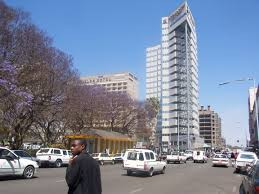
SECURITIES firm, Morgan & Co has predicted lower economic growth of just 5,5% for Zimbabwe this year due to several shocks to the country’s agricultural and mining sectors, the economy’s main drivers.
Last year, economic growth of just 2% was recorded owing to a volatile global commodity market and an El Niño-induced drought.
Hence, the government predicted the economy would rebound by four percentage points to 6% in 2025 owing to better rainfall and a steadier commodity market.
However, in its economic outlook for 2025, Morgan & Co warned that unevenly distributed rainfall, economic challenges, impacts of the tight monetary policy and depressed gold output would lower the projected growth rate.
“The estimates also coincide with the IMF [International Monetary Fund]’s forecasts of 6%,” Morgan & Co said.
“The recovery will be characterised by tailwinds — driven by gold, La Niña, and a likely current account surplus outweighing headwinds such as unevenly distributed first rains and tight monetary policy, and we proffer a slightly lower growth forecast of 5,5% for Zimbabwe in 2025,”
The firm said this would negatively influence Zimbabwe’s balance of payments, inflation rates and exchange rates.
“Unevenly distributed first rains: The weather in Southern Africa is currently transitioning from El Niño to La Niña, and the latter is typically associated with normal to above-normal rains during the region’s agricultural season,” Morgan & Co said.
- Awards target married couples
- Awards target married couples
- Sibanda living his writing dream
- Piggy’s Trading & Investing Tips: Corporate raiders on ZSE
Keep Reading
“While such a phenomenon results in a rebound in agricultural activity in Zimbabwe, rainfall during the sowing season has been unevenly distributed, leading to some losses among farmers who planted early.”
The firm added that the La Niña phenomenon could lead to flooding.
“Normal to above normal rainfall is still expected in the second half of the season, and this underpins the rebound in the agriculture sector compared to last year,” Morgan & Co said.
“However, we maintain that climate risks remain elevated considering that La Niña also brings increased risk of flooding in countries previously affected by El Niño.”
The firm predicted that the mining sector was going to experience slow growth as La Niña would limit mining activities.
“Local gold sector remains resilient: Zimbabwe’s gold receipts — which account for 30% of mining sector receipts — will continue growing but at a much slower pace because of the impact of La Nina and waning central banks’ purchases on output and prices, respectively,” Morgan & Co said.
“Local gold output surged to 36,6 tonnes in 2024 after tax incentives to small-scale miners saw a significant recovery in deliveries from March 2024. However, heavy rains on the back of La Niña will likely result in depressed output in the first quarter of 2025.”
The firm said Zimbabwe’s hydroelectricity output, while expected to slowly recover in the coming months on the back of La Niña, firms would still rely on alternative sources for stability.
“Maximum daily power supply out of Kariba Hydropower station increased from 125MW [megawatts] to 185MW since January 2, 2025, and we expect the trend to continue in the coming months,” Morgan & Co said.
“We maintain that Zimbabwe’s energy intensive sectors will rely on alternatives -mainly generators in their operations in the interim and this holds dire implications on, the cost of production and, in turn, the competitiveness of Zimbabwe’s exports until mid-2025.”
The cost of running generators is estimated to range between US$0,22/kilowatt hour (kWh) and US$0,27/kWh, well above the current electricity tariffs, which range between US$0,10/kWh and US$0,14/kWh.
According to Morgan & Co, the average cost of electricity in the emerging markets is US$0,11/kWh and US$0,16/kWh globally.
The firm also warned about the tight monetary policy.
“The current restrictive monetary policy — marked by tight ZiG and US dollar liquidity and high ZiG interest rates — has positively impacted the currency situation in Zimbabwe by somewhat stabilising parallel market rates and maintaining a narrow gap between the official and parallel market rates,” Morgan & Co said.
“However, this has limited the amount of loans issued by the banking sector and will subsequently affect the availability of bridging finance aimed at covering cashflow gaps between production and receipt of sale proceeds in the private sector.
“This is expected to acutely affect seasonal businesses with government contracts, but will also ripple into aggregate demand in 2025.”










